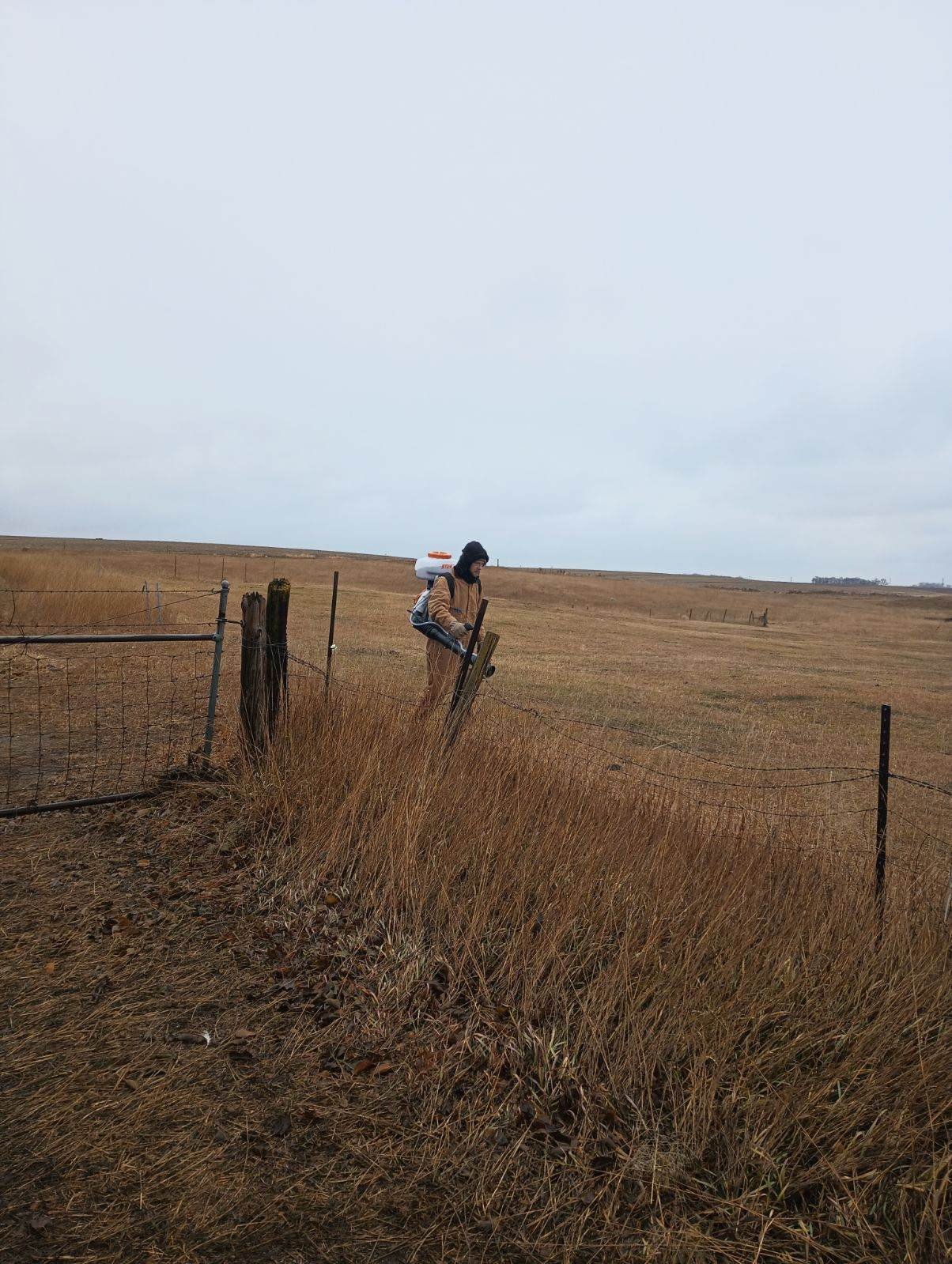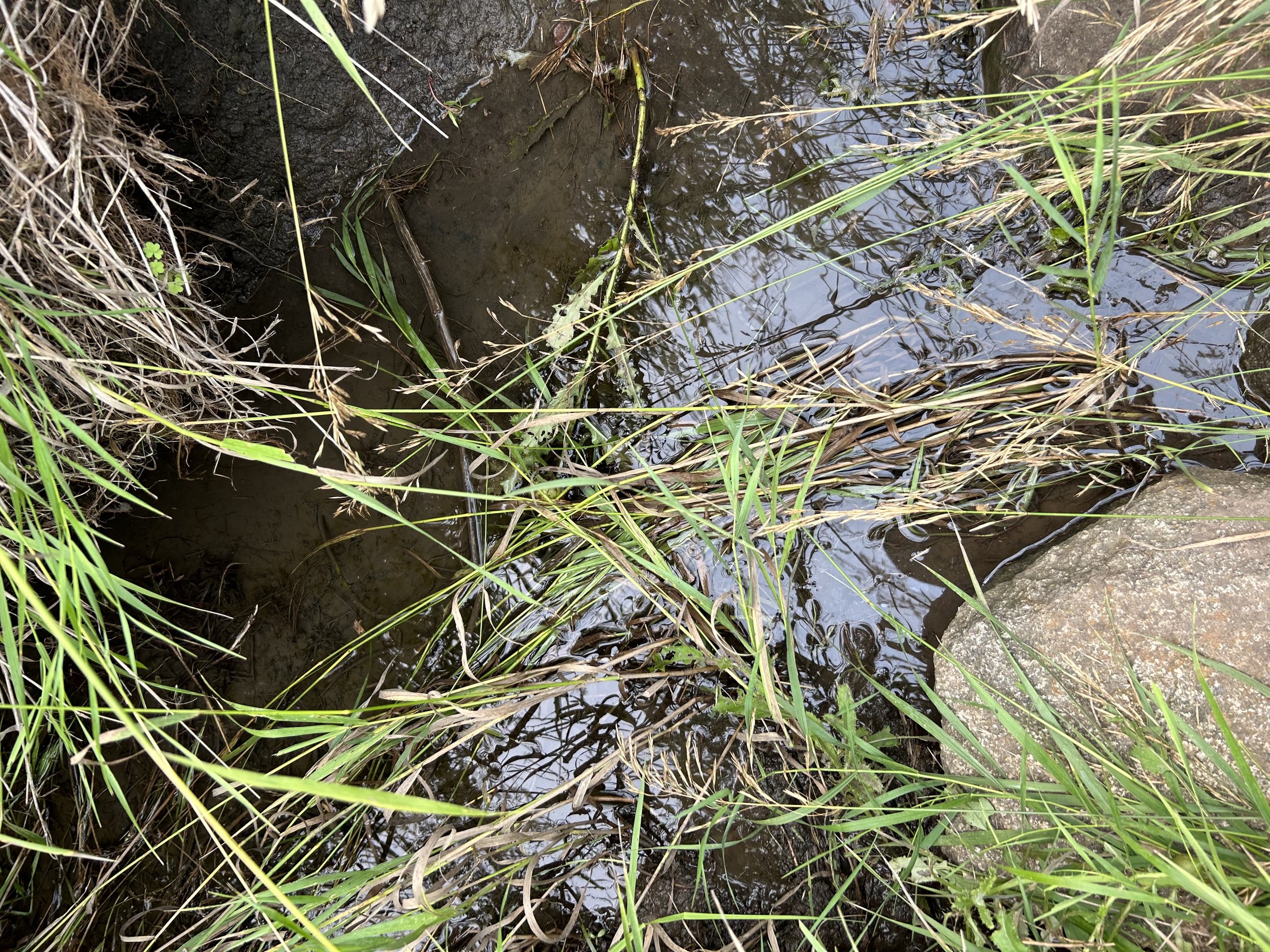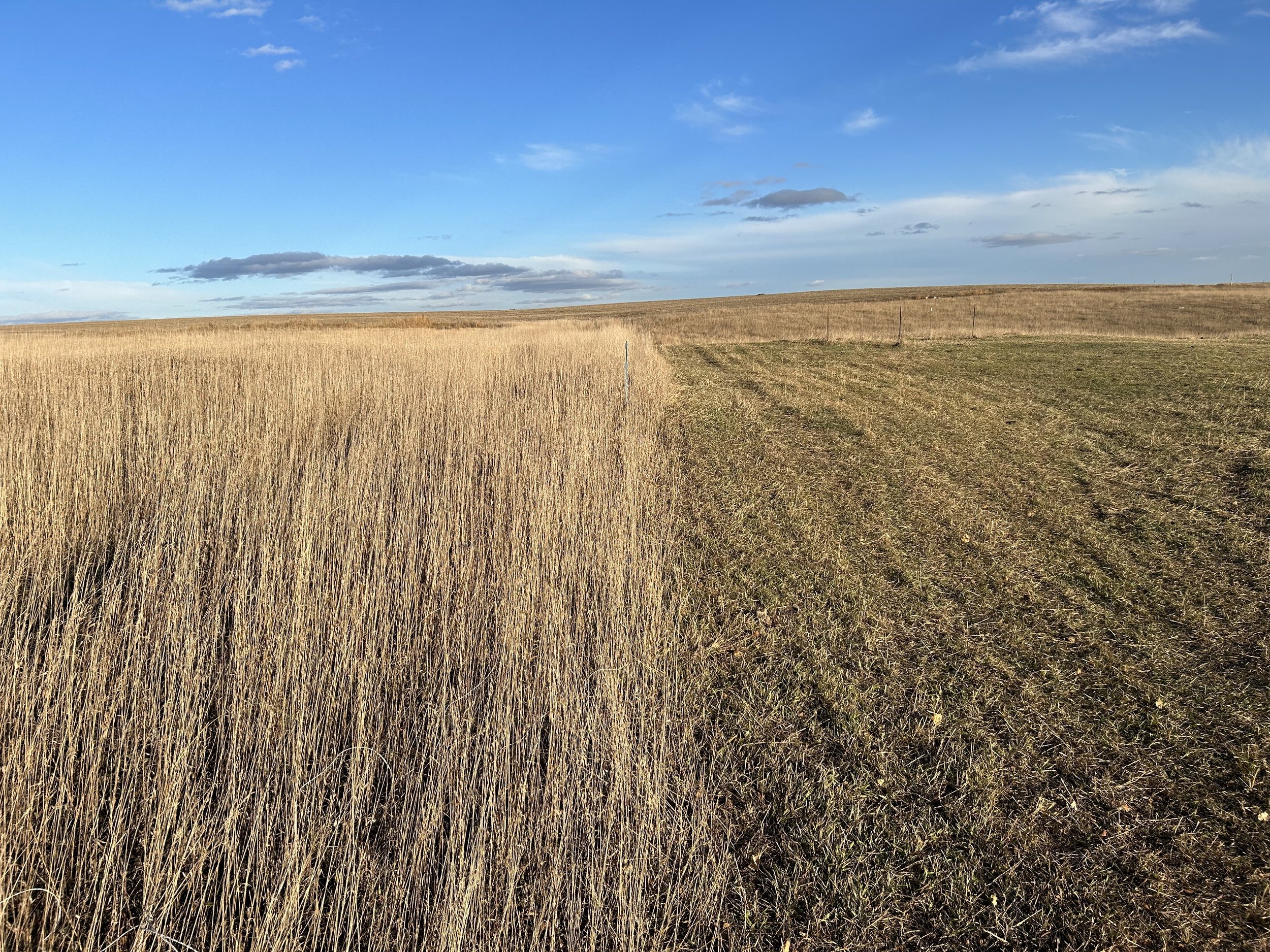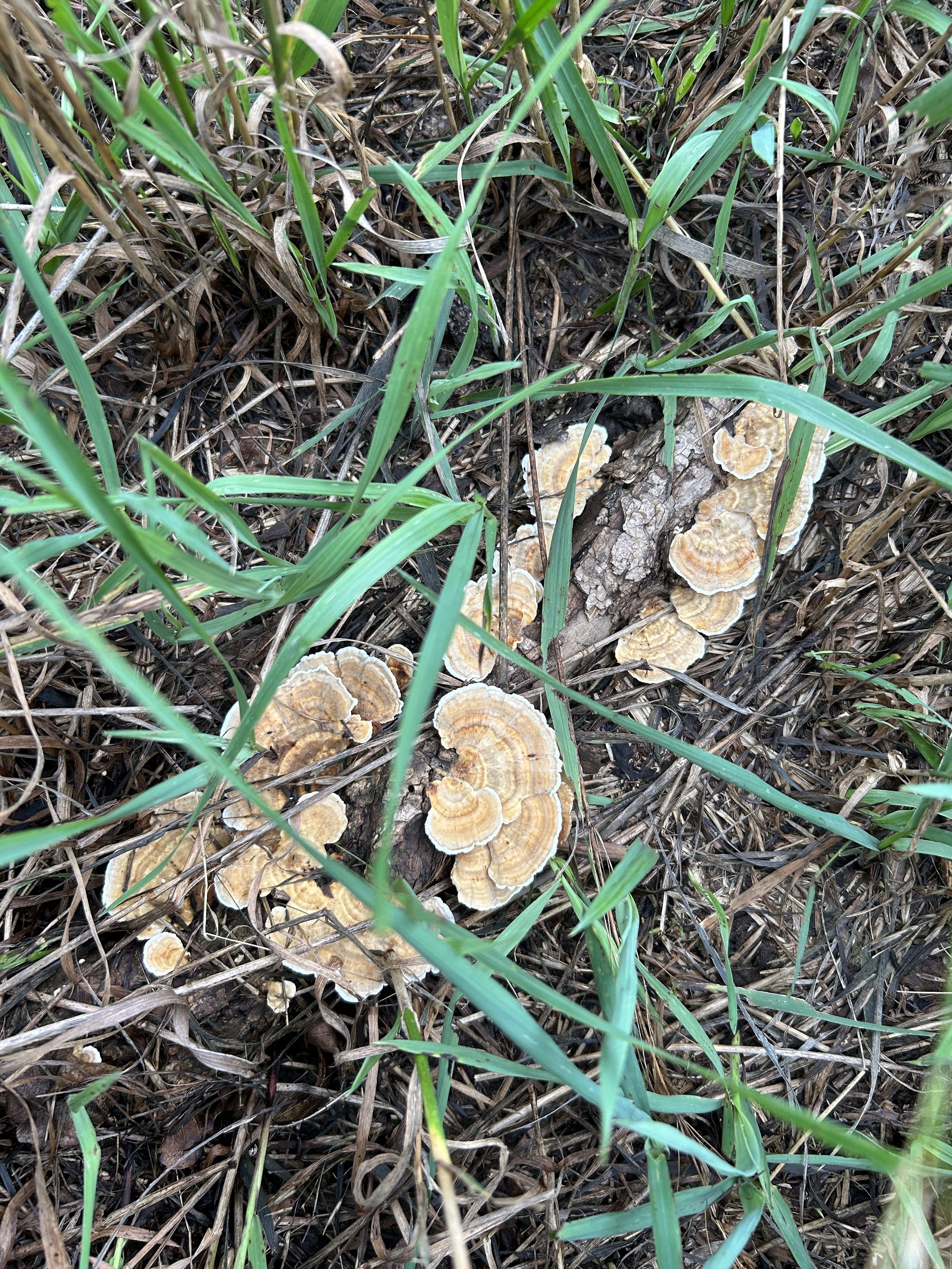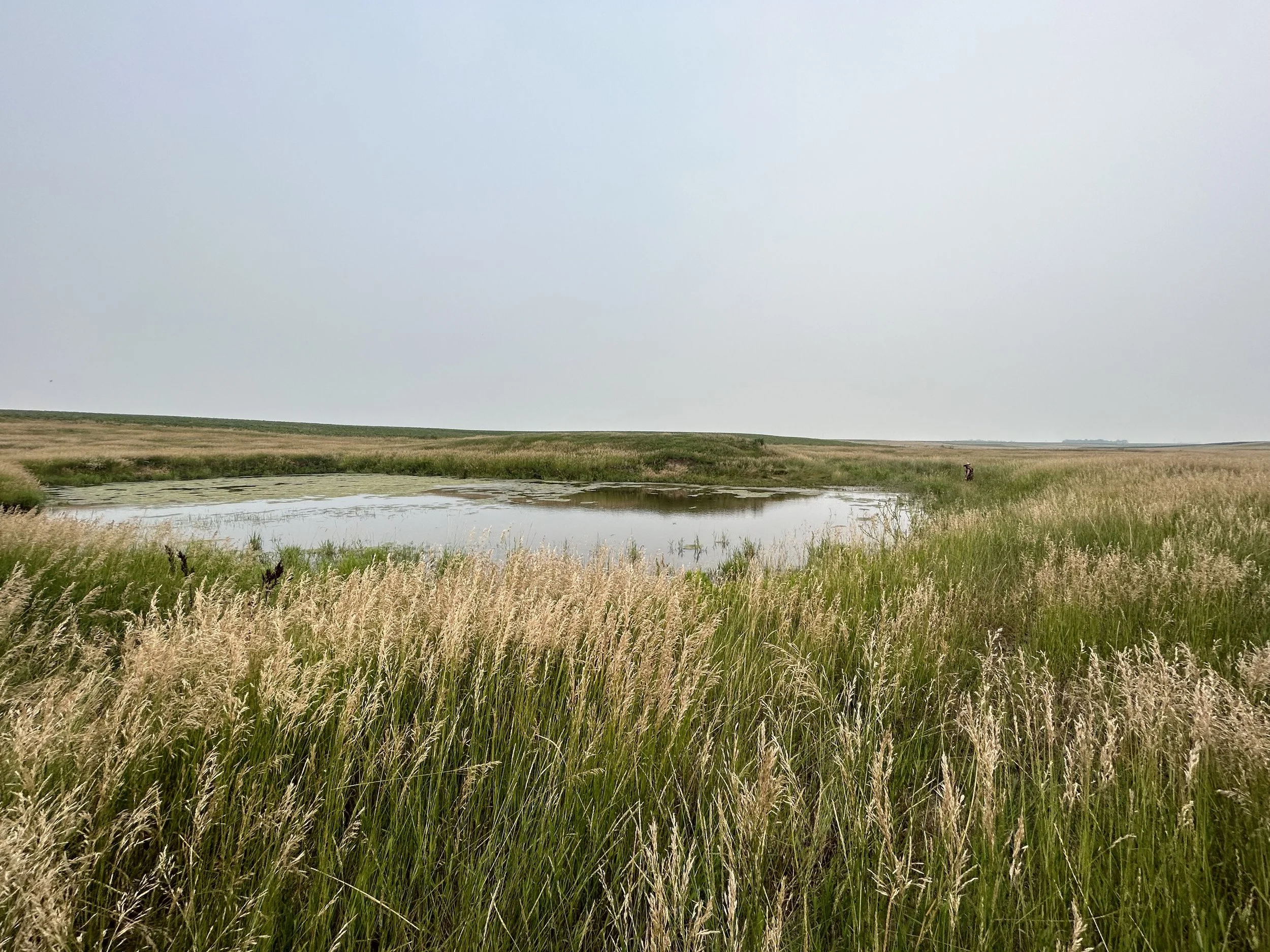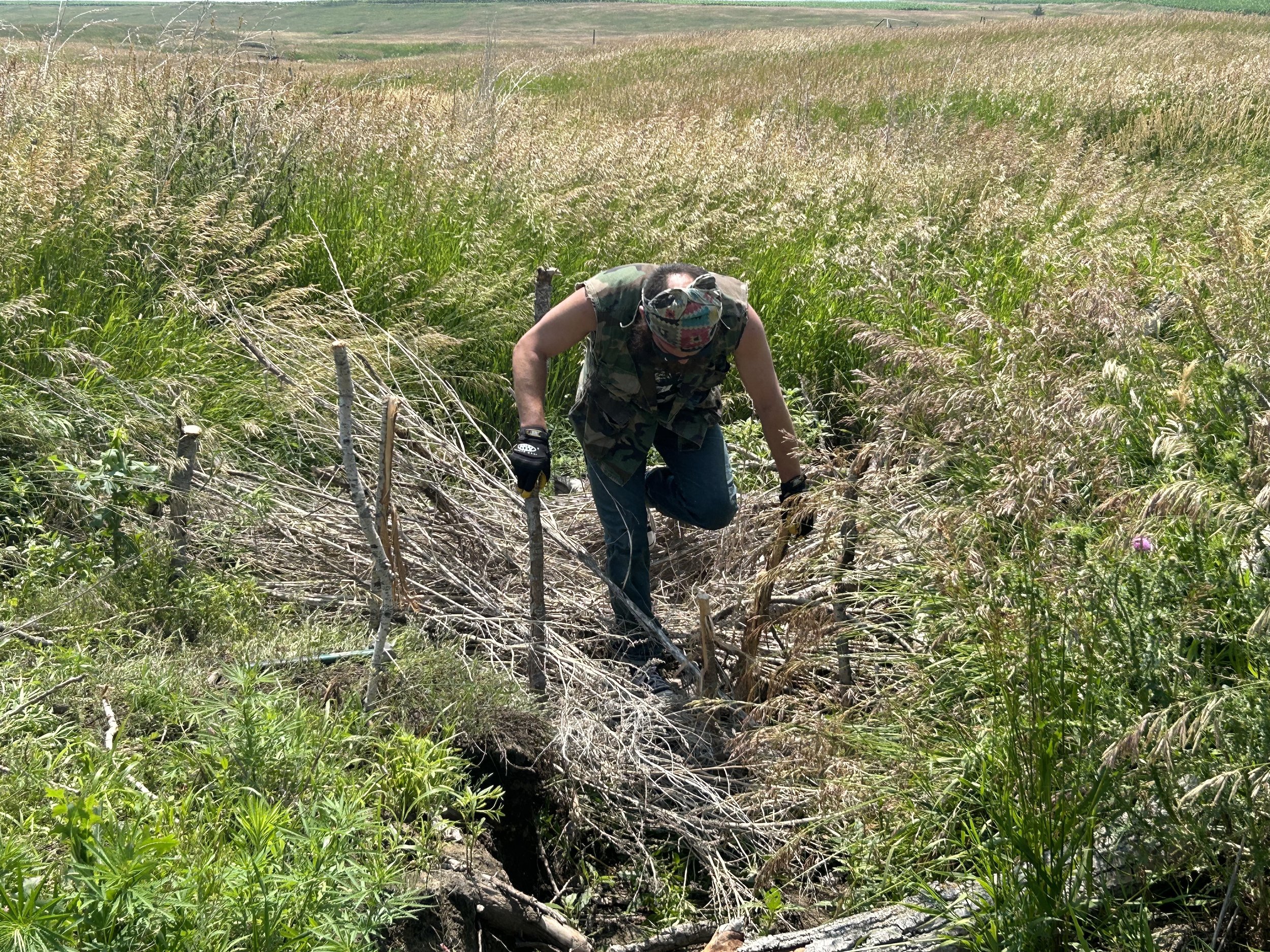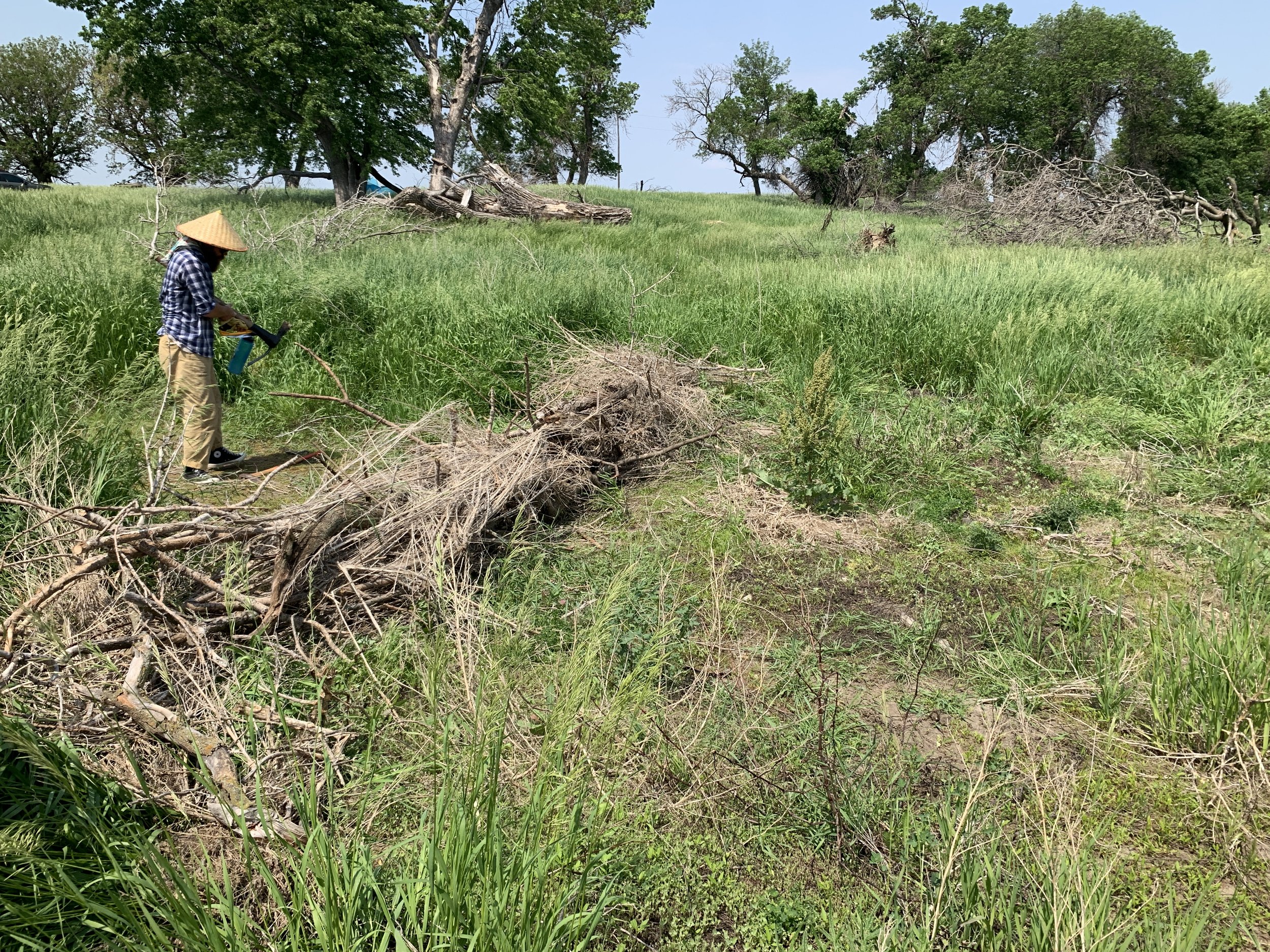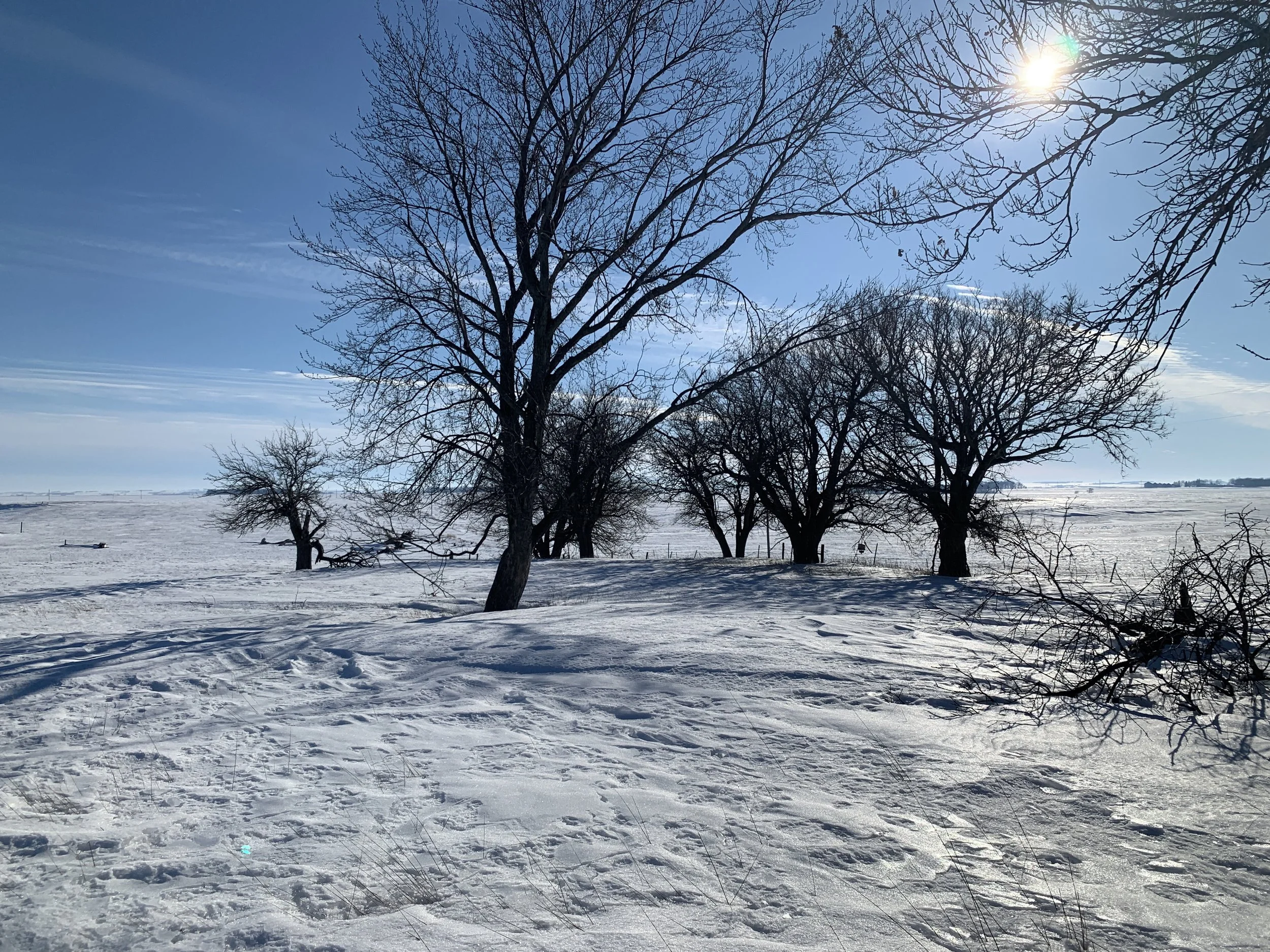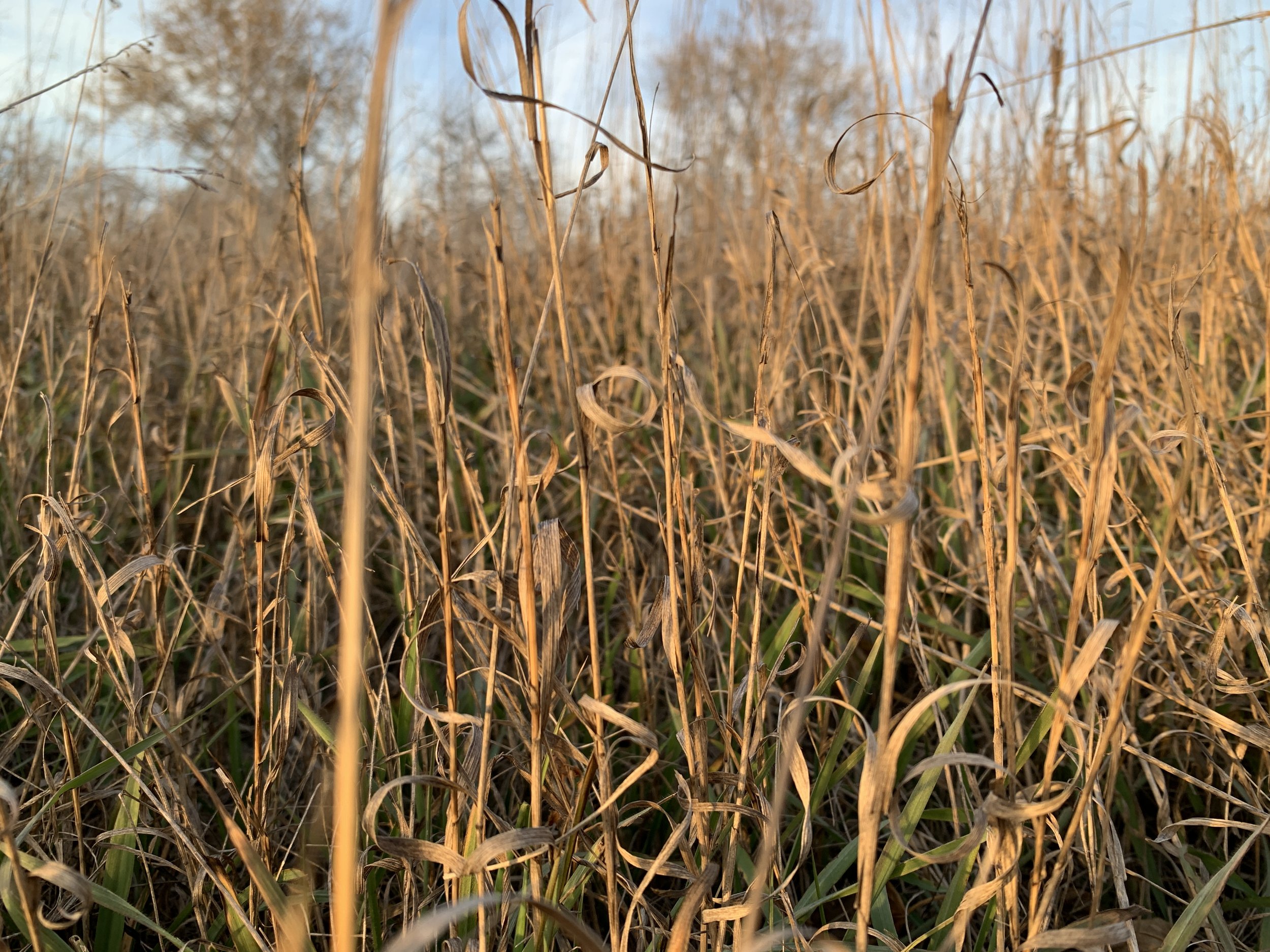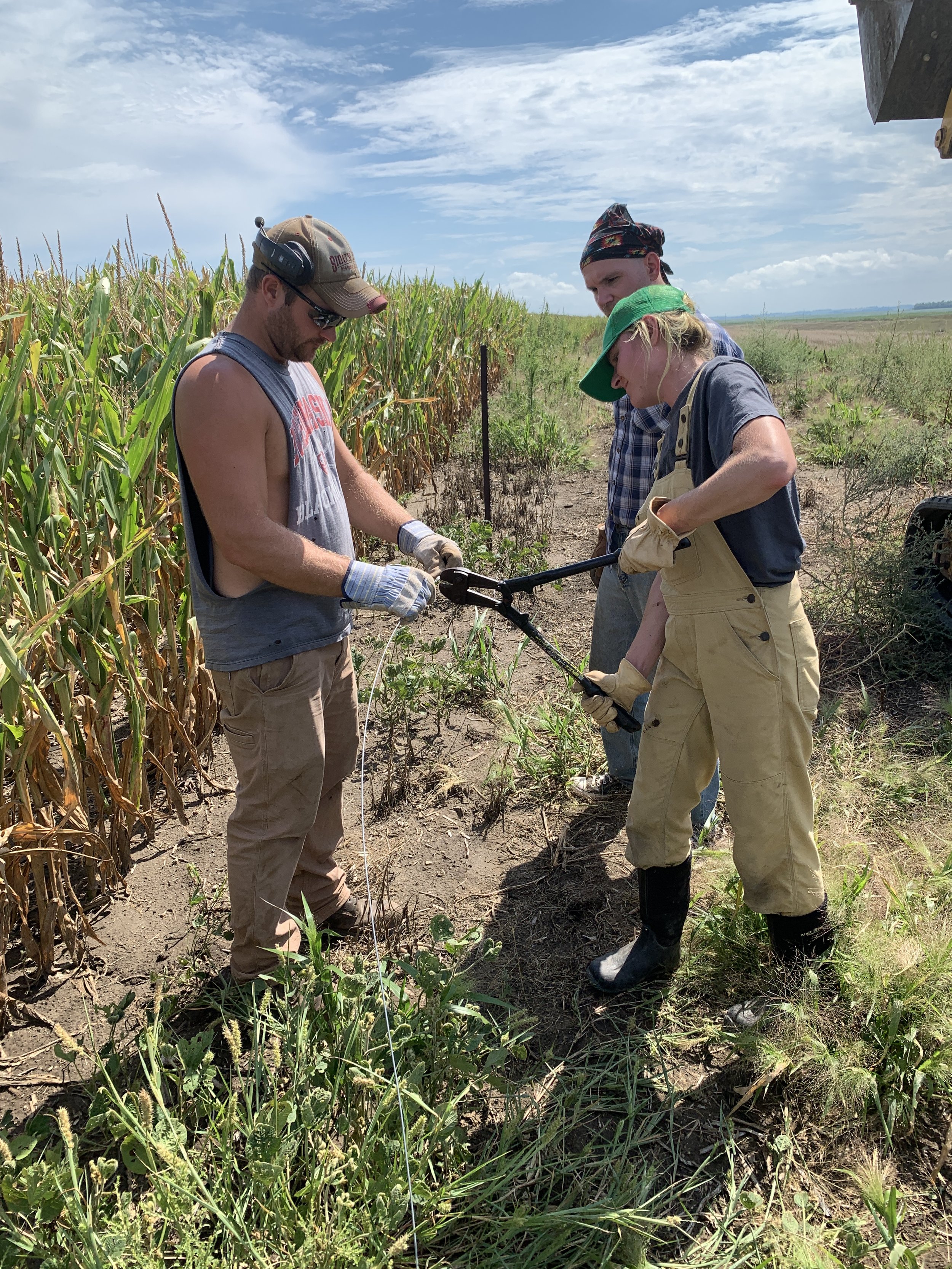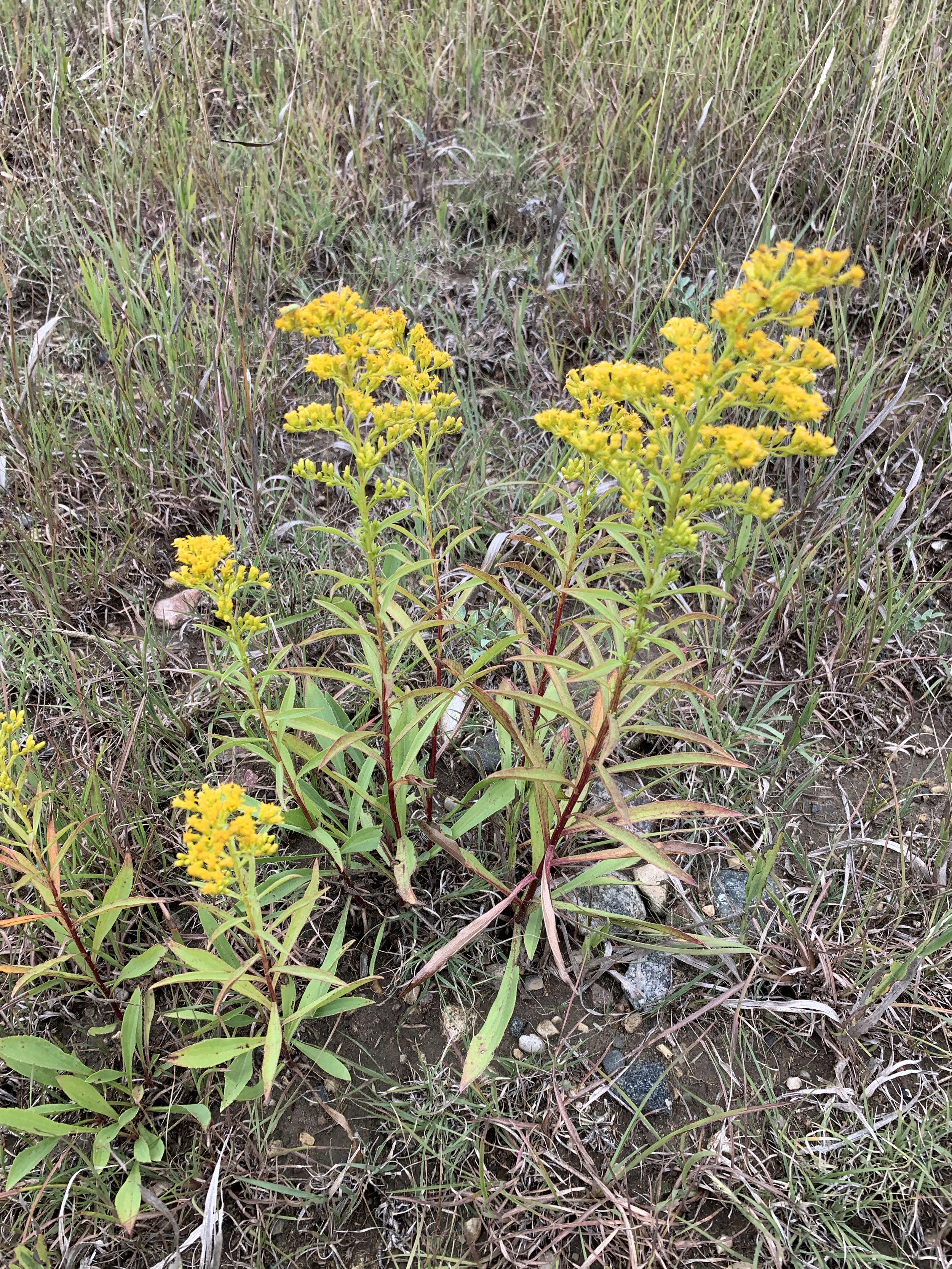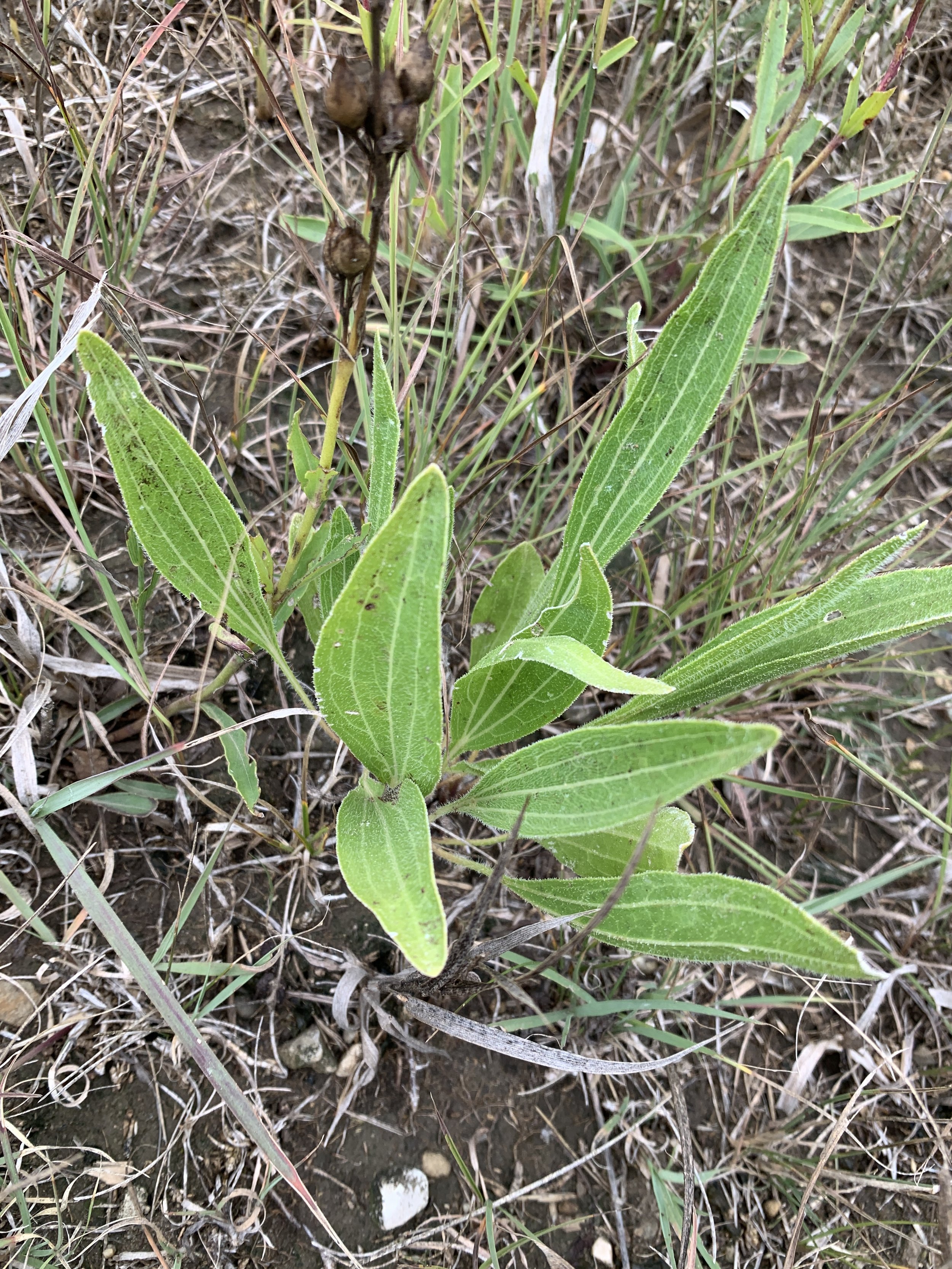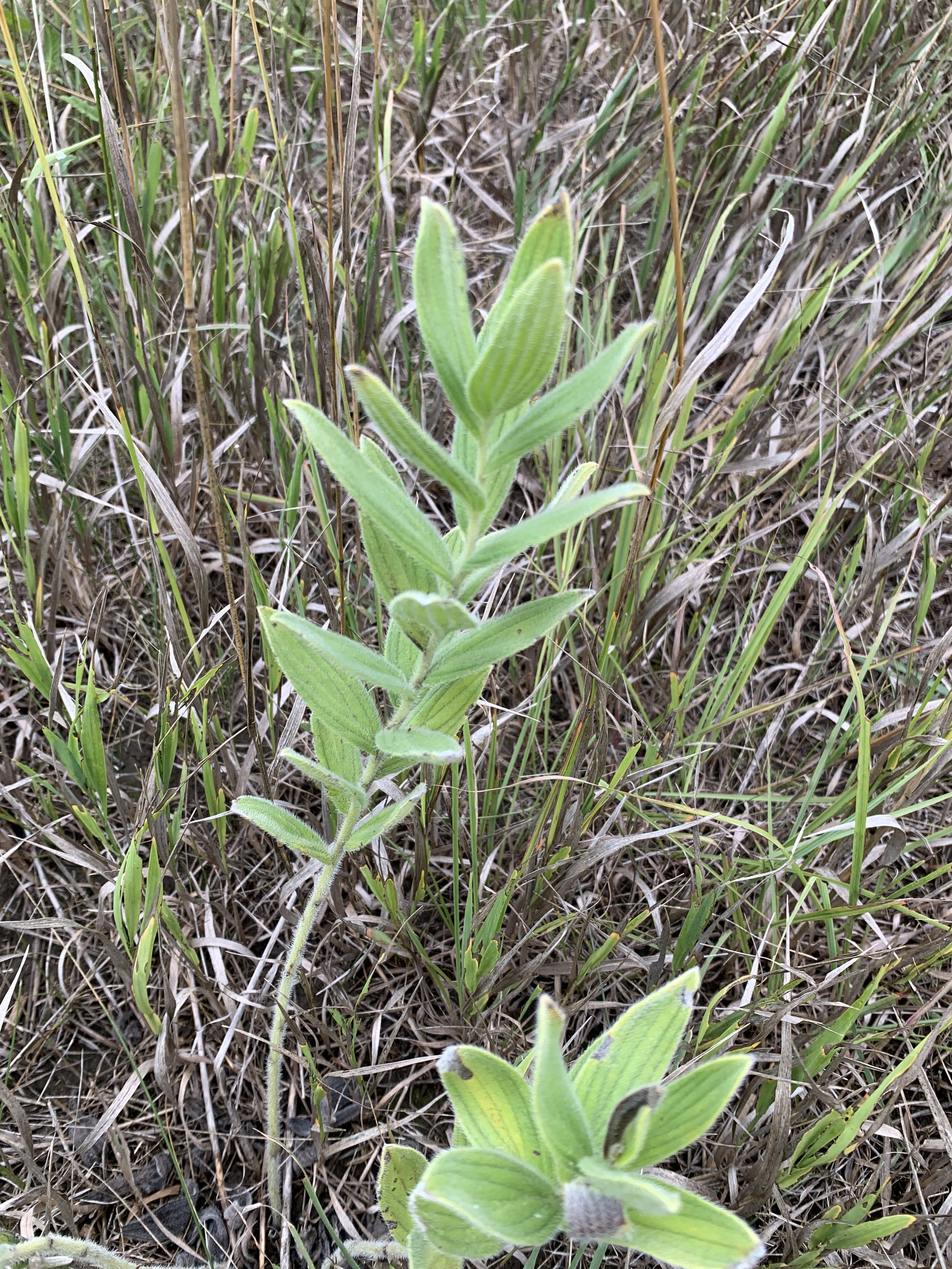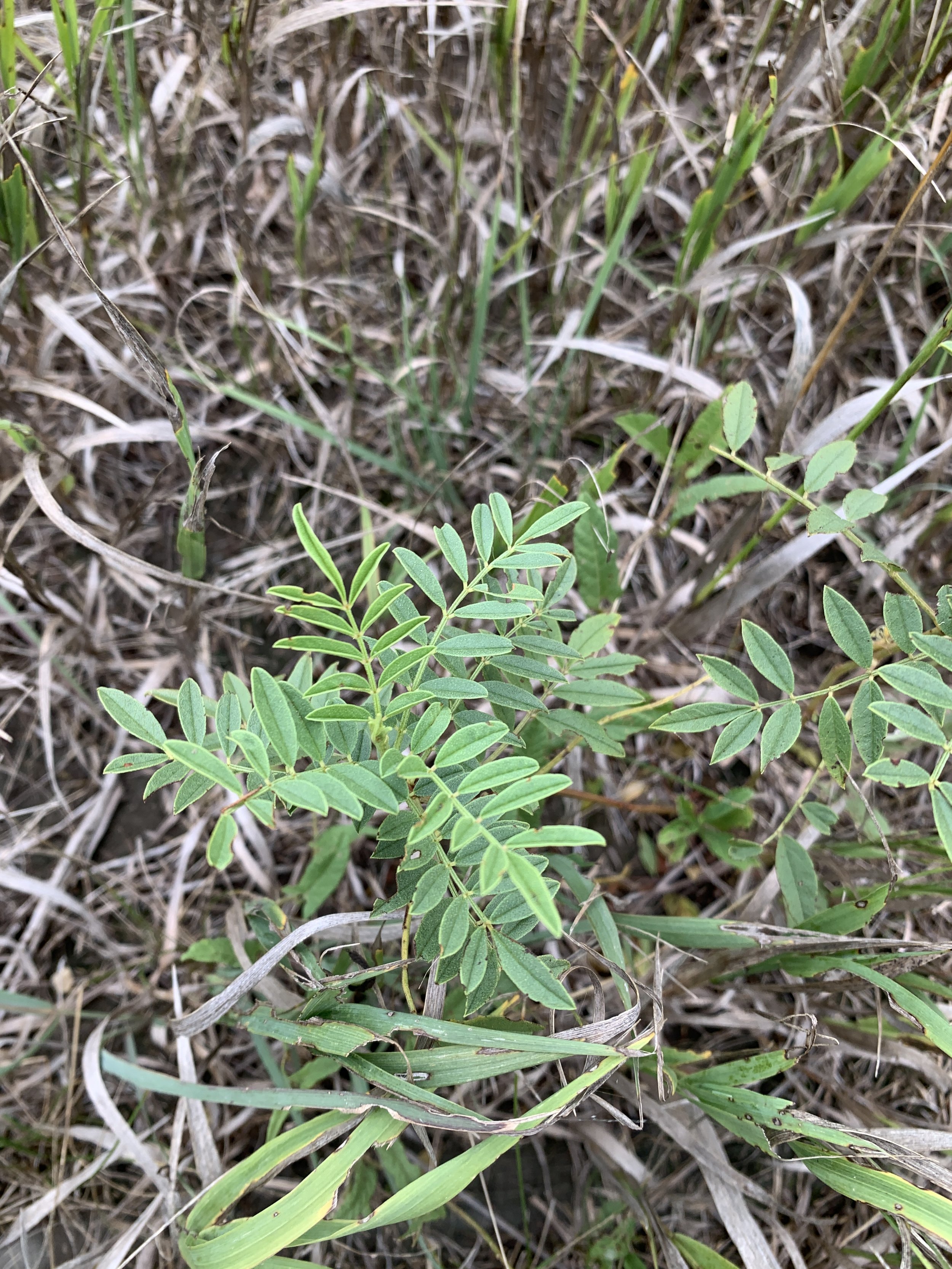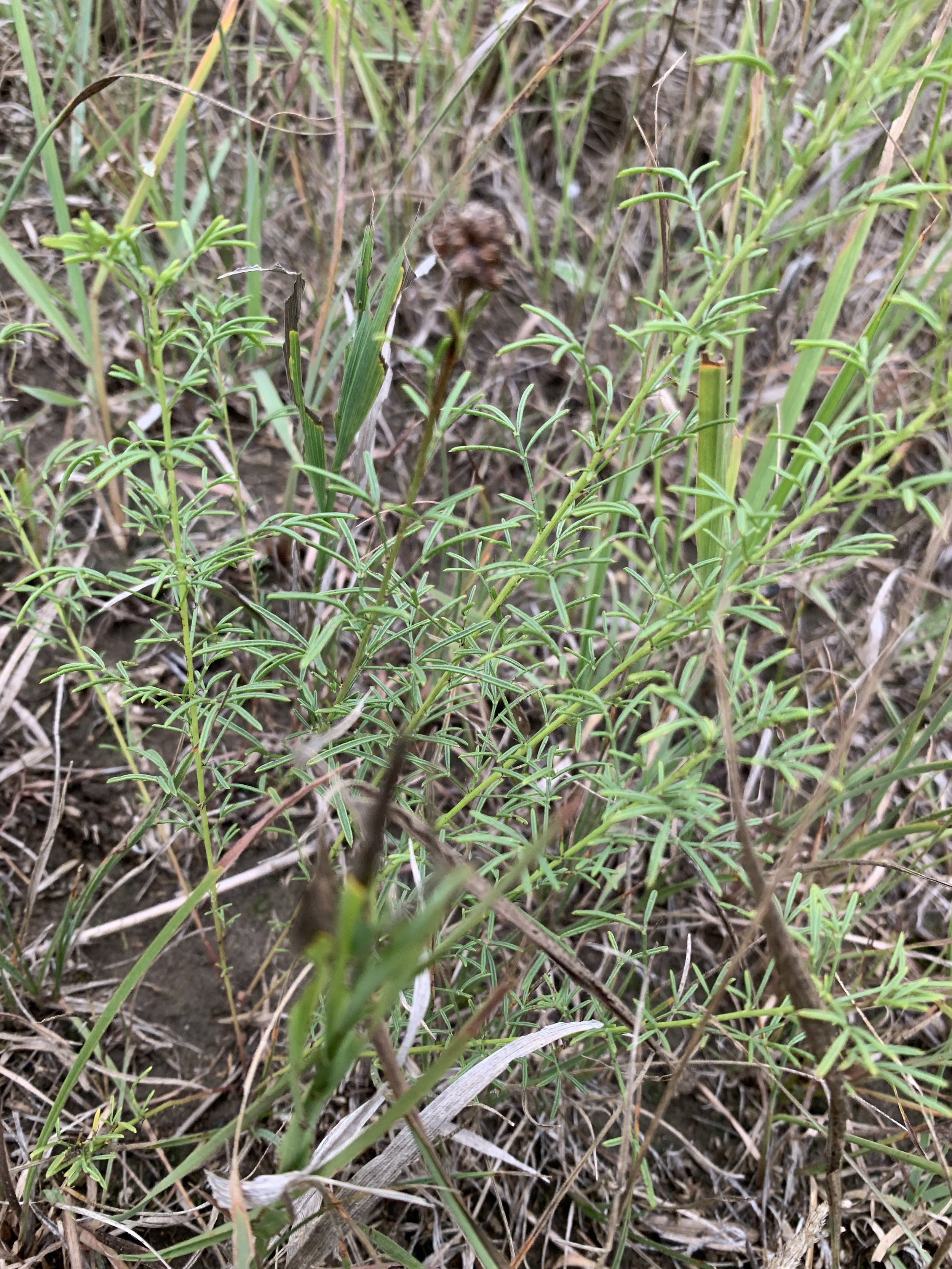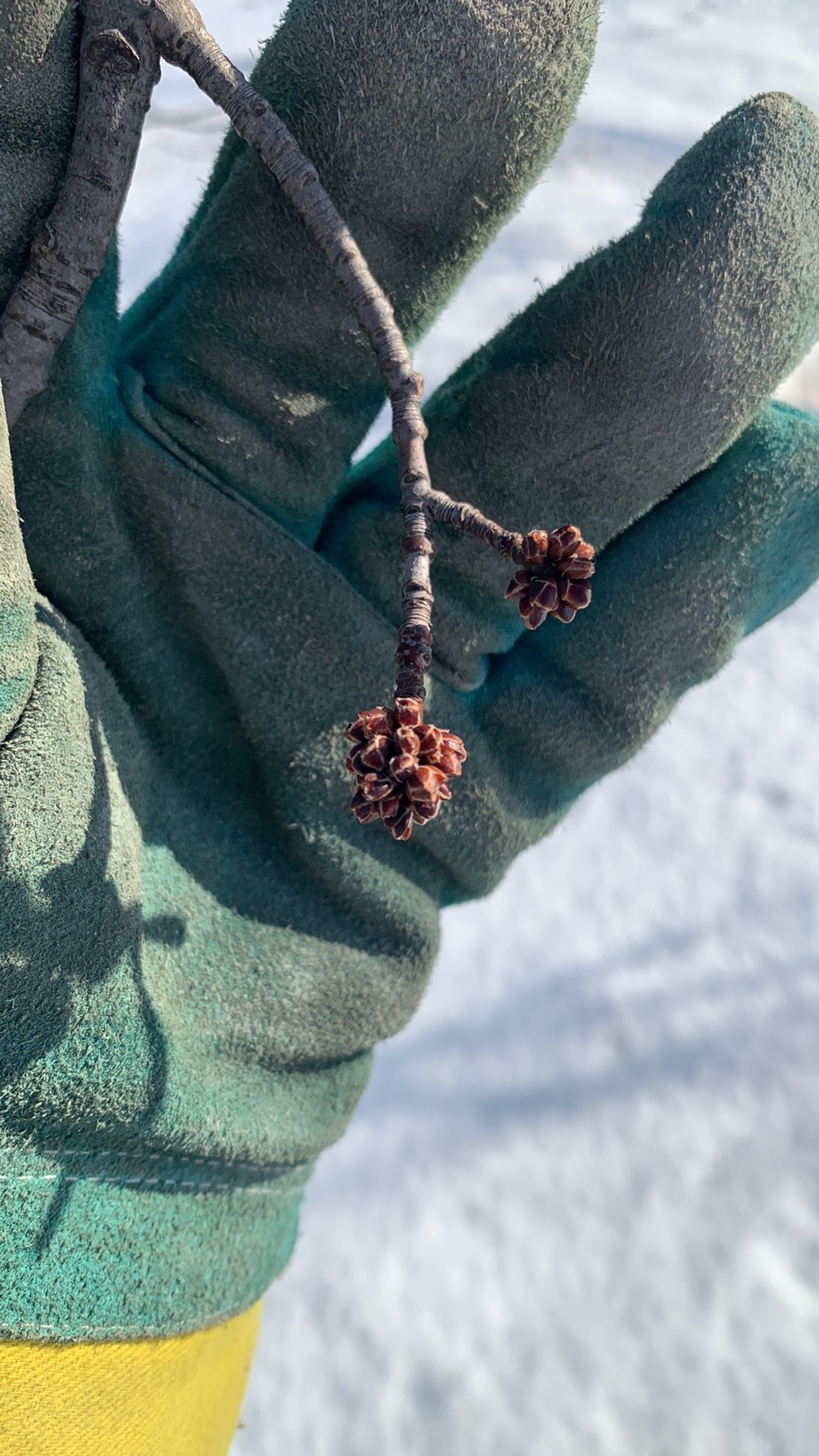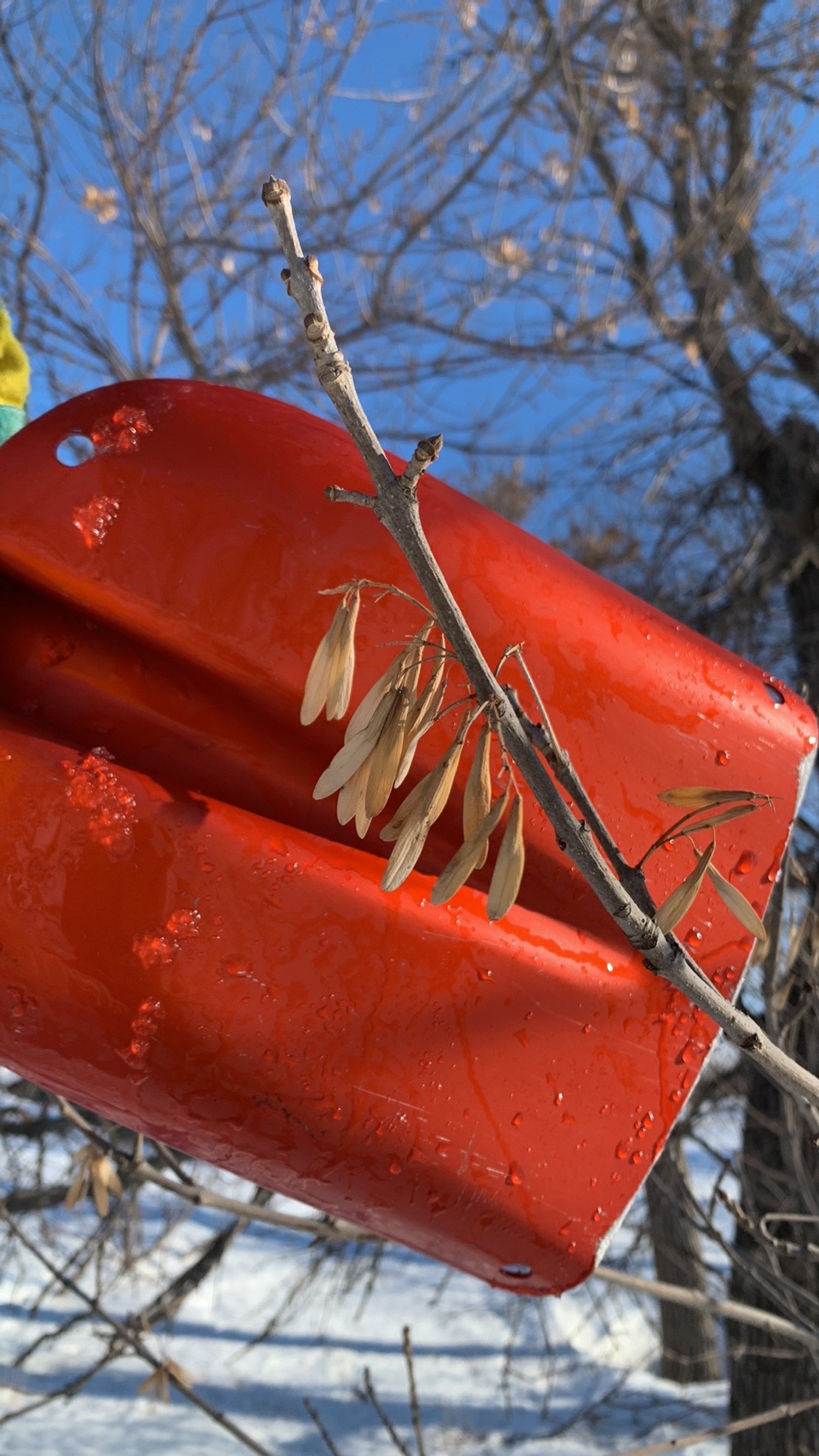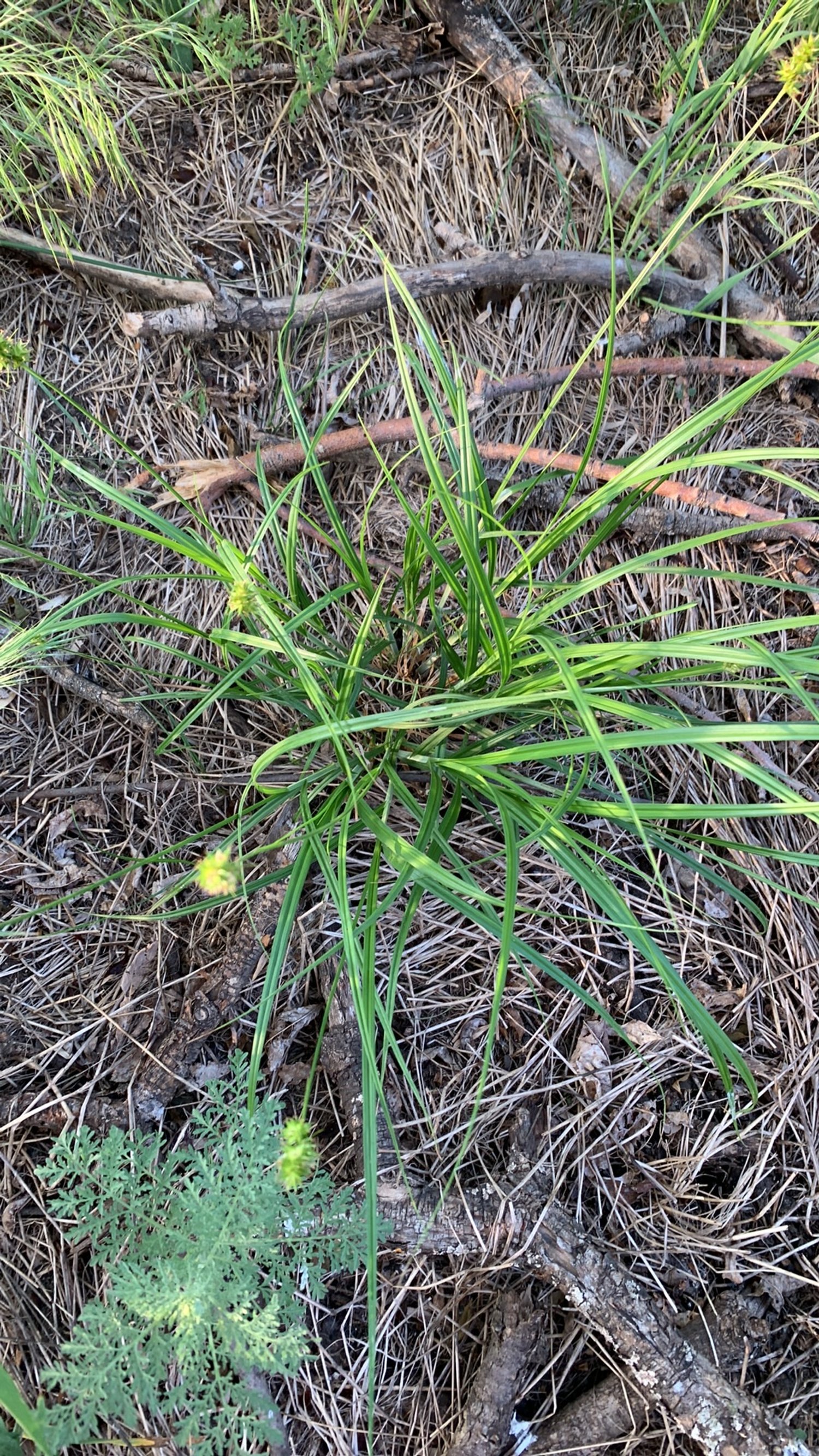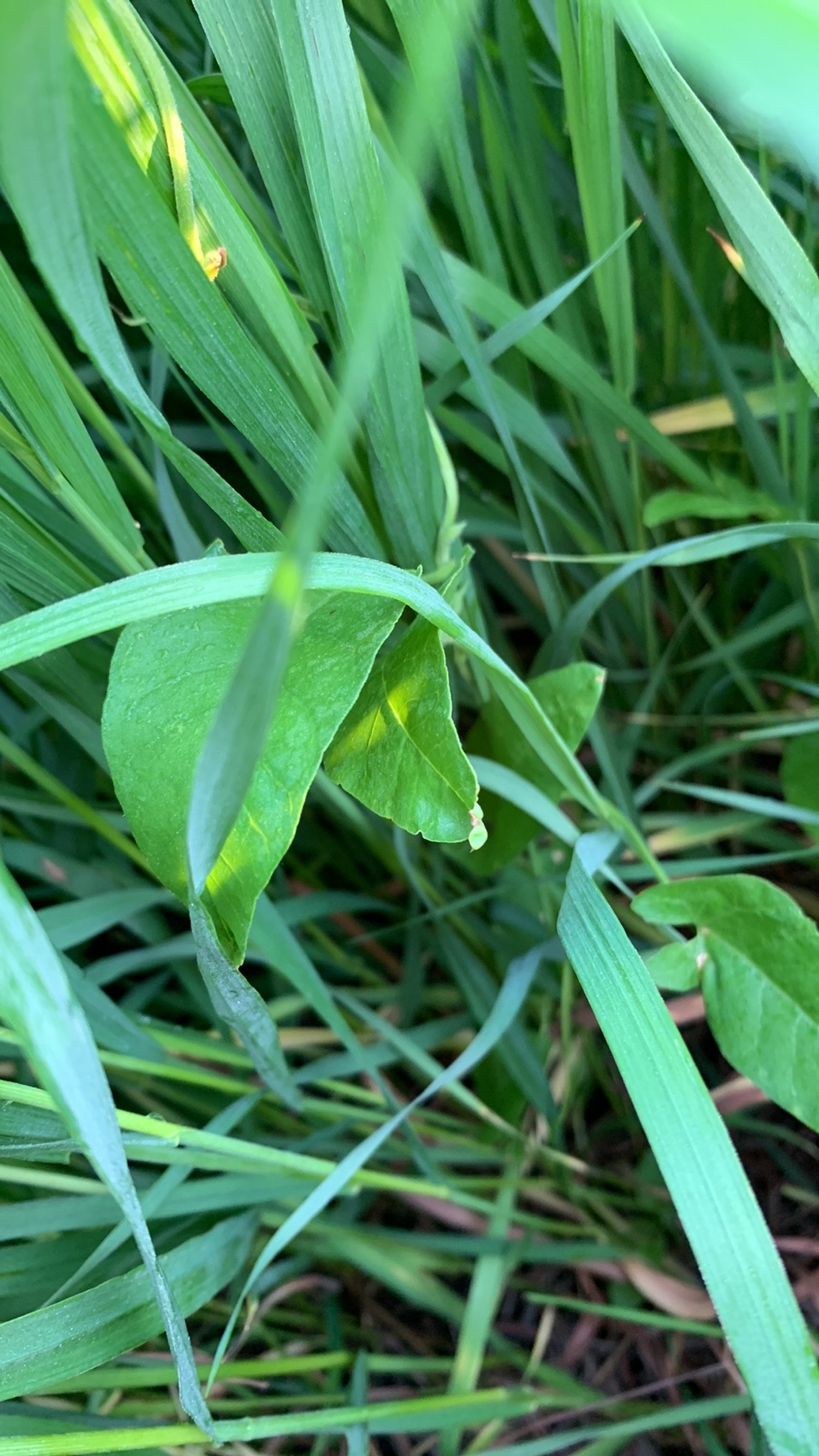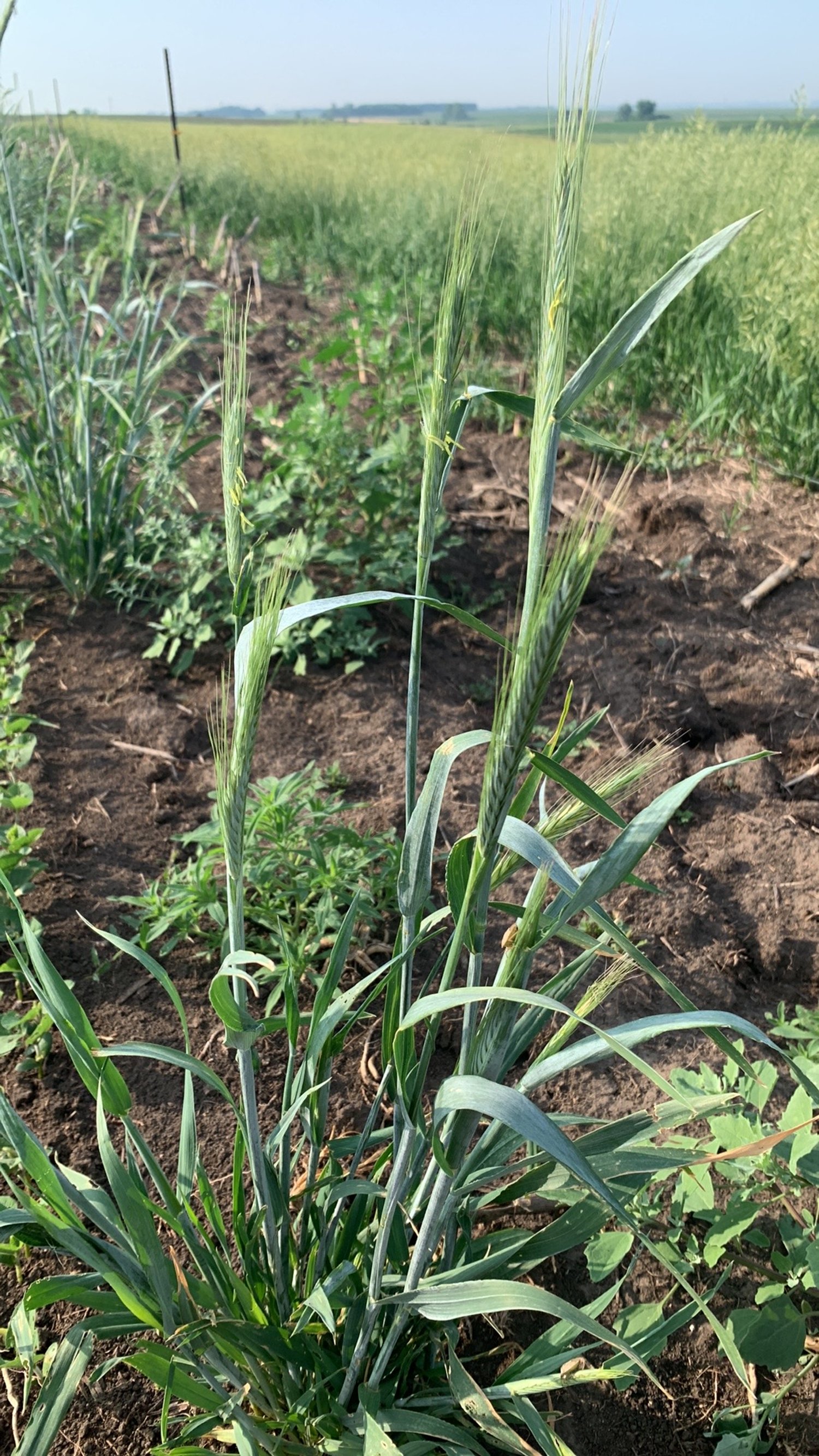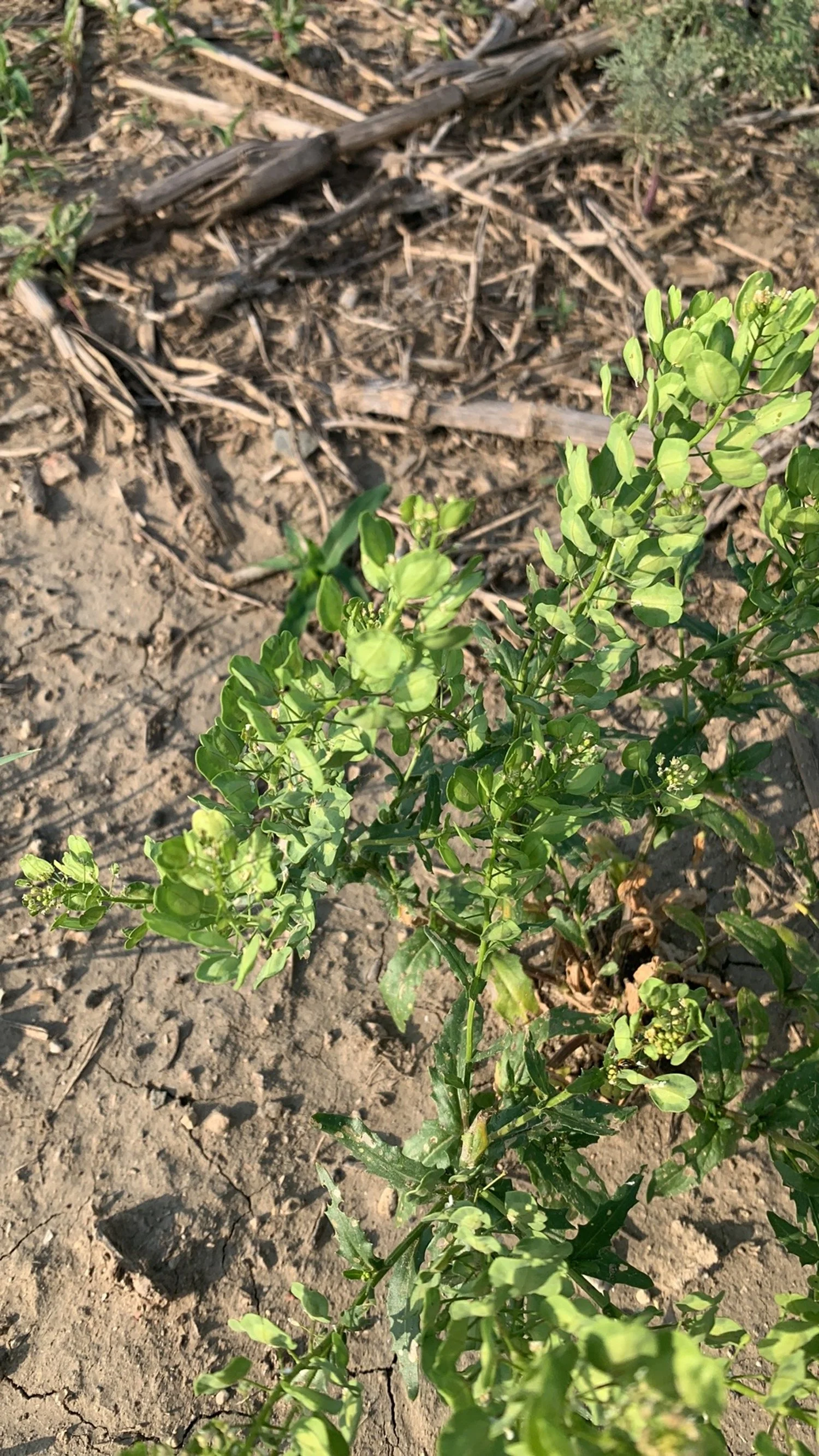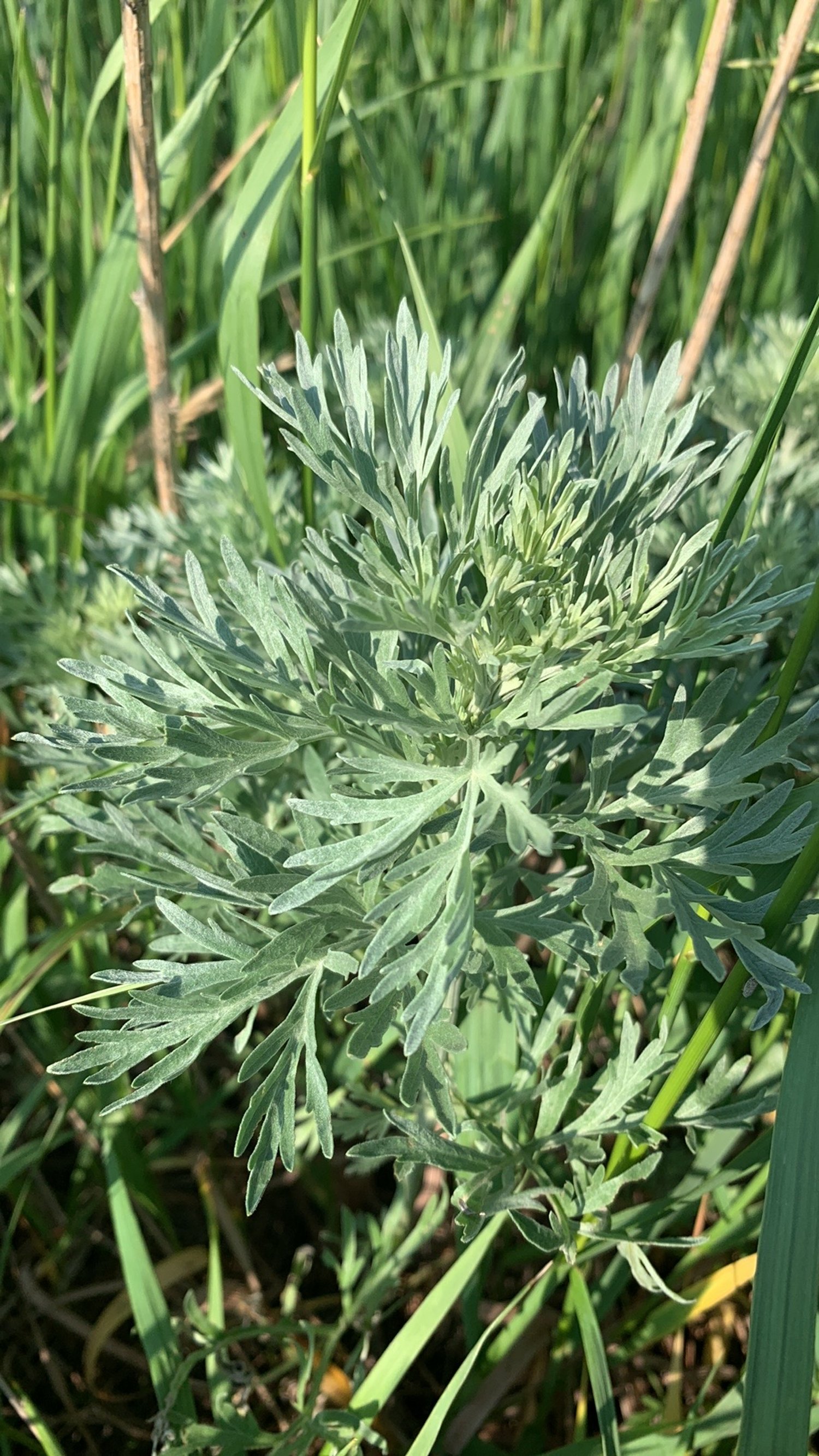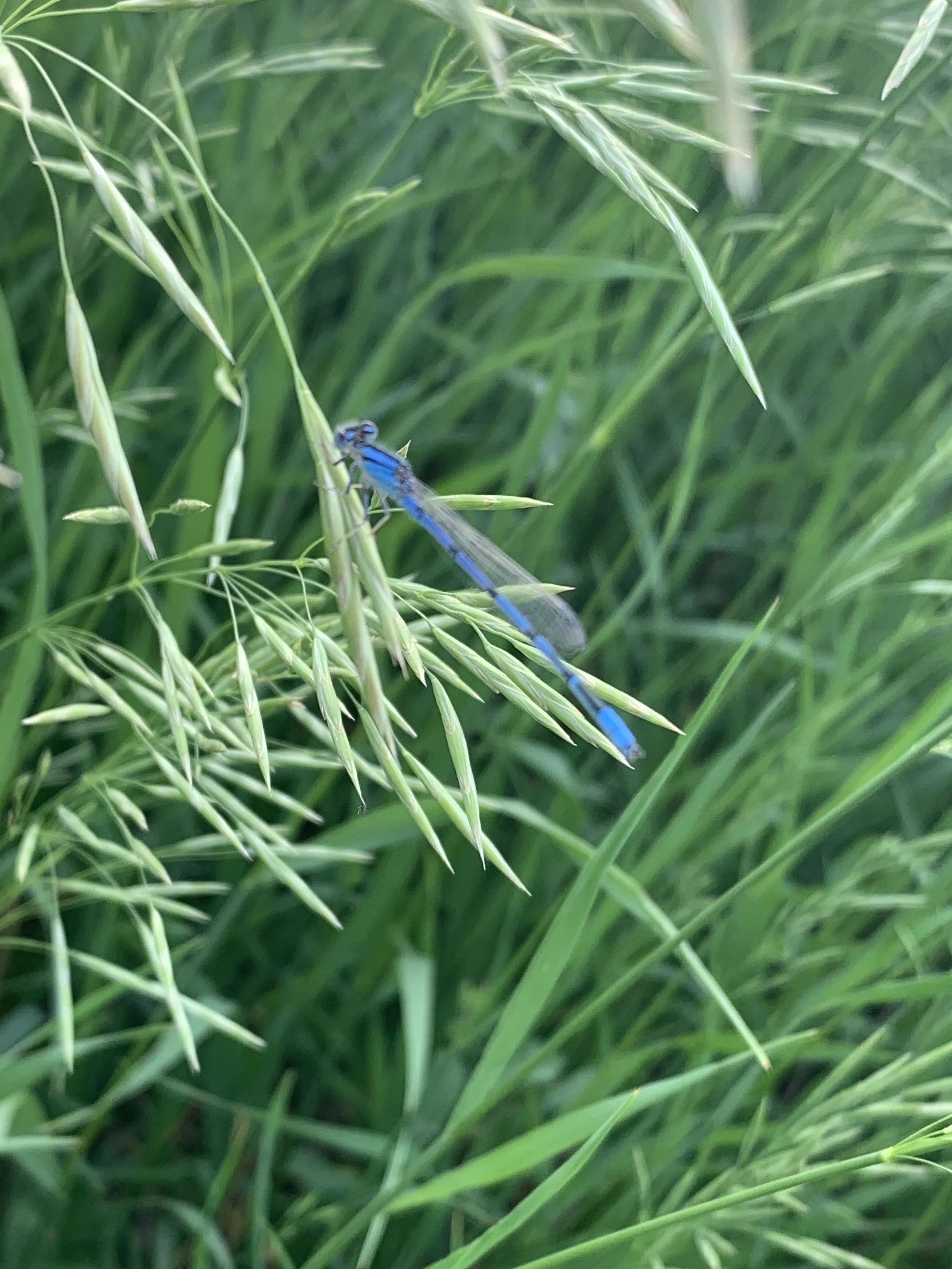
Welcome to Karol’s Prairie
A South Dakota Wildlife Corridor and Riparian Pasture
Vision
Our vision is for Karol's Prairie to be a place abundant with birds, bees, butterflies, animals, and native grasses. This land should forever be a place for conservation, education, and inspiration.
Mission
Our mission for Karol's Prairie is to create a sanctuary that restores and preserves this land as a natural, uninterrupted prairie.
Message from the Brue Family
We come from a family who loves the land – our father and mother loved the land for what it produces. Our sister, Karol, loved the land for its natural beauty.
Updates
What is Prairie Restoration?
Prairie restoration is the process of establishing or re-establishing a prairie ecosystem on land that has previously been modified or degraded. This can involve a variety of activities, such as seed collection and propagation, soil preparation, and the removal of non-native or invasive species. The goal of prairie restoration is to create a self-sustaining ecosystem that supports a diversity of native plant and animal species.
Prairies are grassland ecosystems found in North America, and they are characterized by their diverse plant communities and the absence of trees. Historically, prairies covered millions of acres in the central and western United States, but they have been significantly reduced in size due to human activities such as agriculture, urbanization, and the introduction of non-native species. Prairie restoration projects aim to preserve and restore these ecosystems, which provide important ecological and cultural benefits.
Prairie restoration can be a complex and challenging process, as it involves carefully balancing the needs of the ecosystem with the goals and resources of the restoration project. It may involve working with a team of scientists, land managers, and volunteers to design and implement a restoration plan that is tailored to the specific site and its unique characteristics.

Join us as we restore the prairie for the next generation.
Why is prairie restoration important?
Prairies are important ecosystems that provide a wide range of ecological, economic, and cultural benefits. Some of the reasons why protecting and restoring prairies is important include:
Biodiversity
Prairies are home to a diverse array of plant and animal species, many of which are found nowhere else. Protecting and restoring prairies can help to preserve this biodiversity and support the continued survival of these species.
Carbon Sequestration
Prairies are an important sink for carbon dioxide, a greenhouse gas that contributes to global warming. By protecting and restoring prairies, we can help to reduce atmospheric carbon dioxide levels and mitigate the impacts of climate change.
Soil Conservation
Prairies have deep, complex root systems that help to prevent erosion and preserve soil integrity. Protecting and restoring prairies can help to prevent soil loss and degradation, which can have significant impacts on agricultural productivity and other land uses.
Water Quality
Prairies help to filter and purify water, improving the quality of local water resources. This can have important benefits for both human and ecological health.
Cultural Value
Prairies have a rich cultural history and are deeply connected to the cultures of many indigenous communities. Protecting and restoring prairies can help to preserve this cultural heritage and the traditions of these communities.
Species found and identified on the prairie
Species found on Karol’s Prairie
-
Strophariaceae
Stropharia - usually viscid cap, not hygrophanous, usually found on the ground, dung or in grass (and rarely on wood).
-
Morus alba
Morus alba, known as white mulberry, common mulberry, and silkworm mulberry, is a fast-growing, small to medium-sized mulberry tree that grows to 10–20 m (33–66 ft) tall.
-
Carduus acanthoides
Carduus acanthoides is native to France, Italy, and western Turkey; through Russia and Kazakhstan; to China. In its native range, the plant is found in open grasslands and disturbed areas, and in non-native ranges, it is a weed of annual grasslands, roadsides, fields and pastures, and disturbed areas.
-
Verbana stricta
The beautiful lavender spires of Hoary Vervain make a distinctive statement in the late summer landscape. An essential source of nectar, Hoary Vervain is a desirable component of butterfly gardens, and the leaves are a host food for the Common Buckeye caterpillar and others.
-
Convolvulus arvensis
Convolvulus arvensis, the field bindweed, is a rhizomatous species in the morning glory family (Convolvulaceae), native to Europe and Asia. It is a climbing or creeping herbaceous perennial plant with stems growing to 0.5–2 meters in length, usually found at ground level, with small, white, and pink flowers.
-
Morus rubra
Morus rubra, commonly known as the red mulberry, is a species of mulberry native to eastern and central North America.
-
Taxidea taxus
Badgers are located across the state and occur primarily in open grasslands. They are active throughout the year and are often found near their den, which typically is a large hole dug into soil with a nearby mound of soil.
-
Solidago missouriensis
Solidago missouriensis is a species of flowering plant in the family Asteraceae known by the common names Missouri goldenrod and prairie goldenrod. It is native to North America, where it is widespread across much of Canada, the United States, and northern Mexico.
-
Echinacea angustifolia
Echinacea angustifolia, the narrow-leaved purple coneflower or blacksamson echinacea, is a species of flowering plant in the family Asteraceae. It is native to North America, where it is widespread across much of the Great Plains of central Canada and the central United States, with additional populations in surrounding regions.
-
Lithospermum canescens
Lithospermum canescens, or the hoary puccoon is a perennial herb endemic to eastern North America. The plant grows in a variety of habitats. It has golden yellow flowers which bloom from April to May.
-
Glycyrrhiza lepidota
Glycyrrhiza lepidota (American licorice) is a species of Glycyrrhiza (a genus in the pea/bean family, Fabaceae) native to most of North America, from central Canada south through the United States to California, Texas and Virginia, but absent from the southeastern states. It is also sometimes known in the United States as "wild licorice", to distinguish it from the related European licorice (Glycyrrhiza glabra) which is occasionally cultivated.
-
Psoralea argophylla
Psoralea argophylla (common name silverleaf Indian breadroot) is a species of legume in the family Fabaceae. The species is native to the central United States, as well as the three Canadian prairie provinces, Alberta, Saskatchewan, and Manitoba. Psoralea argophylla grows naturally on forb, and it grows perennially.
-
Dalea purpurea
Dalea purpurea is a species of flowering plant in the legume family known as purple prairie clover. Native to central north America, purple prairie clover is a relatively common member of the Great Plains and prairie ecosystems. It blooms in the summer with dense spikes of bright purple flowers that attract many species of insects.
-
Hyles lineata
Hyles lineata, also known as the white-lined sphinx, is a moth of the family Sphingidae. They are sometimes known as the hummingbird moth because of their bird-like size (2-3 inch wingspan) and flight patterns.
-
Turdus migratorius
The American robin (Turdus migratorius) is a migratory bird of the true thrush genus and Turdidae, the wider thrush family. It is named after the European robin[2] because of its reddish-orange breast, though the two species are not closely related, with the European robin belonging to the Old World flycatcher family.
-
Acer saccharinum
Acer saccharinum, commonly known as silver maple, creek maple, silverleaf maple, soft maple, large maple, water maple, swamp maple, or white maple, is a species of maple native to the eastern and central United States and southeastern Canada. It is one of the most common trees in the United States.
-
Fraxinus pennsylvanica
Fraxinus pennsylvanica, the green ash or red ash, is a species of ash native to eastern and central North America, from Nova Scotia west to southeastern Alberta and eastern Colorado, south to northern Florida, and southwest to Oklahoma and eastern Texas. It has spread and become naturalized in much of the western United States and also in Europe from Spain to Russia.
-
Descurainia sophia
Descurainia sophia is a member of the family Brassicaceae. Common names include flixweed, herb-Sophia and tansy mustard. It reproduces by seeds. It is a dominant weed in dark brown prairie and black prairie soils of southern Alberta. Its stem is erect, branched, and 4–30 in high.
-
Erigeron canadensis
Erigeron canadensis is an annual plant native throughout most of North America and Central America. It is also widely naturalized in Eurasia and Australia. Common names include horseweed, Canadian horseweed, Canadian fleabane, coltstail, marestail, and butterweed.
-
Hordeum jubatum
Hordeum jubatum, with common names foxtail barley, bobtail barley, squirreltail barley, and intermediate barley, is a perennial plant species in the grass family Poaceae. It occurs wild mainly in northern North America and adjacent northeastern Siberia.
-
Hesperis matronalis
Hesperis matronalis is an herbaceous flowering plant species in the family Brassicaceae. It has numerous common names, including dame's rocket, damask-violet, dame's-violet,[2] dames-wort, dame's gilliflower, night-scented gilliflower, queen's gilliflower, rogue's gilliflower, summer lilac, sweet rocket, mother-of-the-evening, Good & Plenties, and winter gilliflower.
-
Ellisia nyctelea
Aunt Lucy flowers are pretty inconspicuous and can easily be missed but the leaves are fairly easy to spot. It may grow erect but is more often sprawling and likes disturbed soil. It is apparently adaptable, as well, as I came upon a colony of it with miniature leaves but full-sized flowers, growing along a dry railroad track. I thought it might be a different species but there is nothing else quite like it, so I believe it was just an adaptation to the dryness of the particular site. Ellisia was in the Hydrophyllaceae (Waterleaf) family but this has been merged into Boraginaceae (Borage).
-
Carex flava
Carex flava, called hedgehog grass, is a widespread species of sedge, native to the northern United States, Canada, Iceland, Europe, the Atlas Mountains in Africa, the Transcaucasus area, and parts of Siberia. It is the namesake of the Carex flava species complex.
-
Bromus inermis
Bromus inermis is a species of the true grass family. This rhizomatous grass is native to Europe and considered invasive in North America. The plant is characterized by an erect, leafy, long-lived perennial, 46 to 91 cm tall, rhizomatous and commonly producing a dense sod.
-
Medicago lupulina
Medicago lupulina, commonly known as black medick, nonesuch, or hop clover, is a plant of dry grassland belonging to the legume or clover family. Plants of the genus Medicago, or bur clovers, are closely related to the true clovers and sweet clover.
-
Calystegia sepium
Calystegia sepium is a species of flowering plant in the family Convolvulaceae. It has a subcosmopolitan distribution throughout temperate regions of the North and South hemispheres.
-
Rumex crispus
Rumex crispus, the curly dock, curled dock or yellow dock, is a perennial flowering plant in the family Polygonaceae, native to Europe and Western Asia.
-
Hylotelephium telephium
Hylotelephium telephium, known as orpine, livelong, frog's-stomach, harping Johnny, life-everlasting, live-forever, midsummer-men, Orphan John and witch's moneybags, is a succulent perennial groundcover of the family Crassulaceae native to Eurasia.
-
Psathyrellaceae Fungi
The Psathyrellaceae are a family of dark-spored agarics that generally have rather soft, fragile fruiting bodies, and are characterized by black, dark brown, rarely reddish, or even pastel-colored spore prints.
-
Hymenochaetaceae
The Hymenochaetaceae are a family of fungi in the order Hymenochaetales. The family contains several species that are implicated in many diseases of broad-leaved and coniferous trees, causing heart rot, canker and root diseases, and also esca disease of grapevines.
-
Phalaris arundinacea
Phalaris arundinacea, or reed canary grass, is a tall, perennial bunchgrass that commonly forms extensive single-species stands along the margins of lakes and streams and in wet open areas, with a wide distribution in Europe, Asia, northern Africa and North America.
-
Artemisia ludoviciana
Artemisia ludoviciana is a North American species of flowering plant in the daisy family Asteraceae, known by several common names, including silver wormwood, western mugwort, Louisiana wormwood, white sagebrush, lobed cud-weed, prairie sage, and gray sagewort.
-
Lithospermum caroliniense
Lithospermum caroliniense, commonly known as the hairy puccoon or Carolina puccoon or Plains puccoon, is a flowering plant found in the Midwestern United States and Canadian provinces surrounding the Great Lakes. The plant grows in sandhills, pine barrens, and dry, sandy woods.
-
Triticum aestivum
Common wheat, also known as bread wheat, is a cultivated wheat species. About 95% of wheat produced worldwide is common wheat; it is the most widely grown of all crops and the cereal with the highest monetary yield.
-
Thlaspi arvense
Thlaspi arvense, known by the common name field pennycress, is a flowering plant in the cabbage family Brassicaceae. It is native to Eurasia, and is a common weed throughout much of North America and its home.
-
Symphoricarpos occidentalis
Symphoricarpos occidentalis, commonly called western snowberry,[1] is a woody species of flowering plant in the honeysuckle family. Symphoricarpos occidentalis is a creeping shrub, with pink, rounded to bell-shaped flowers and spherical or bulbous shaped, white or pink-tinted fruits.
-
Elymus smithii
Elymus smithii (Rydb.) Gould. Western wheat grass. Elymus smithii is a perennial grasslike herb that is native to California, and also found elsewhere in western North America. also called Pascopyrum smithii.
-
Artemisia absinthium
Artemisia absinthium, otherwise known as common wormwood, is a species of Artemisia native to North Africa and temperate regions of Eurasia, and widely naturalized in Canada and the northern United States.
-
Procyon lotor
The raccoon, also spelled racoon and sometimes called the common raccoon to distinguish it from other species, is a mammal native to North America. It is the largest of the procyonid family, having a body length of 40 to 70 cm, and a body weight of 5 to 26 kg.
-
Pachydiplax longipennis
The blue dasher is an insect of the skimmer family. It is the only species in the genus Pachydiplax. It is very common and widely distributed through North America and into the Bahamas. Although the species name longipennis means "long wings", their wings are not substantially longer than those of related species.
-

Calvatia gigantea
Calvatia gigantea, commonly known in English as the giant puffball, is a puffball mushroom commonly found in meadows, fields, and deciduous forests in late summer and autumn. It is found in temperate areas throughout the world.
-

Eleodes suturalis
Eleodes suturalis is a species of darkling beetle. As currently known, it is endemic to the United States. Their range extends from South Dakota to Texas and west to southwestern Wyoming, Colorado, New Mexico, and extreme southeastern Arizona, and probably into Mexico.
-

Alopecosa kochi
Wolf spiders are members of the family Lycosidae (from Ancient Greek λύκος (lúkos) 'wolf'). They are robust and agile hunters with excellent eyesight. They live mostly in solitude, hunt alone, and usually do not spin webs. Some are opportunistic hunters, pouncing upon prey as they find it or chasing it over short distances; others wait for passing prey in or near the mouth of a burrow.
-

Trametes ochracea
Trametes ochracea grows on standing and fallen dead wood of deciduous trees, in particular beeches and oaks.
Unlike the closely-related Turkeytail Trametes versicolor, which is tremendously variable in colour, Trametes ochracea is much more consistent in its general appearance; however, pale forms of Turkeytail could be confused with this species. They are readily separable by measuring spore size, however.
-
Carduus nutans
Carduus nutans, with the common names musk thistle, nodding thistle, and nodding plumeless thistle, is a biennial plant in the daisy and sunflower family Asteraceae. It is native to regions of Eurasia.
-
Polygonum aviculare
Polygonum aviculare or common knotgrass is a plant related to buckwheat and dock. It is also called prostrate knotweed, birdweed, pigweed and lowgrass. It is an annual found in fields and wasteland, with white flowers from June to October.
-
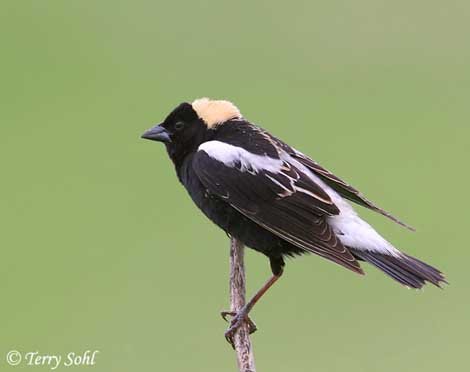
Dolichonyx oryzivorus
The bobolink is a small New World blackbird and the only member of the genus Dolichonyx. An old name for this species is the "rice bird", from its tendency to feed on cultivated grains during winter and migration.
-

Charadrius vociferus
The killdeer is a large plover found in the Americas. It gets its name from its shrill, two-syllable call, which is often heard. It was described and given its current scientific name in 1758 by Carl Linnaeus in the 10th edition of his Systema Naturae. Three subspecies are described.
-

Agelaius phoeniceus
One of the most abundant birds across North America, and one of the most boldly colored, the Red-winged Blackbird is a familiar sight atop cattails, along soggy roadsides, and on telephone wires. Glossy-black males have scarlet-and-yellow shoulder patches they can puff up or hide depending on how confident they feel. Females are a subdued, streaky brown, almost like a large, dark sparrow. Their early and tumbling song are happy indications of the return of spring.
-

Turdus migratorius
The American robin (Turdus migratorius) is a migratory bird of the true thrush genus and Turdidae, the wider thrush family. It is named after the European robin[2] because of its reddish-orange breast, though the two species are not closely related, with the European robin belonging to the Old World flycatcher family. The American robin is widely distributed throughout North America, wintering from southern Canada to central Mexico and along the Pacific coast.
-

Hirundo rustica
The barn swallow (Hirundo rustica) is the most widespread species of swallow in the world. It appears to have the largest natural distribution of any of the world's passerines, ranging over 251 million square kilometres globally. It is a distinctive passerine bird with blue upperparts and a long, deeply forked tail. It is found in Europe, Asia, Africa and the Americas. In Anglophone Europe it is just called the swallow; in northern Europe it is the only common species called a "swallow" rather than a "martin".
-

Melanerpes erythrocephalus
The red-headed woodpecker (Melanerpes erythrocephalus) is a mid-sized woodpecker found in temperate North America. Its breeding habitat is open country across southern Canada and the east-central United States. It is rated as least concern on the International Union for Conservation of Nature (IUCN)'s Red List of Endangered species, having been down-listed from near threatened in 2018.
-

Phasianus colchicus
It is a well-known gamebird, among those of more than regional importance, perhaps the most widespread and ancient one in the whole world. The common pheasant is one of the world's most hunted birds; it has been introduced for that purpose to many regions and is also common on game farms where it is commercially bred.
-

Zenaida macroura
The mourning dove (Zenaida macroura) is a member of the dove family, Columbidae. The bird is also known as the American mourning dove, the rain dove, colloquially as the turtle dove, and it was once known as the Carolina pigeon and Carolina turtledove.
Karol’s Prairie, Incorporated is classified as a 501(c)2 non-profit organization by the standards of the Internal Revenue Service (IRS). Therefore, the donation may be tax-deductible to the extent allowed by law. Tax ID Number: 87-4176470

